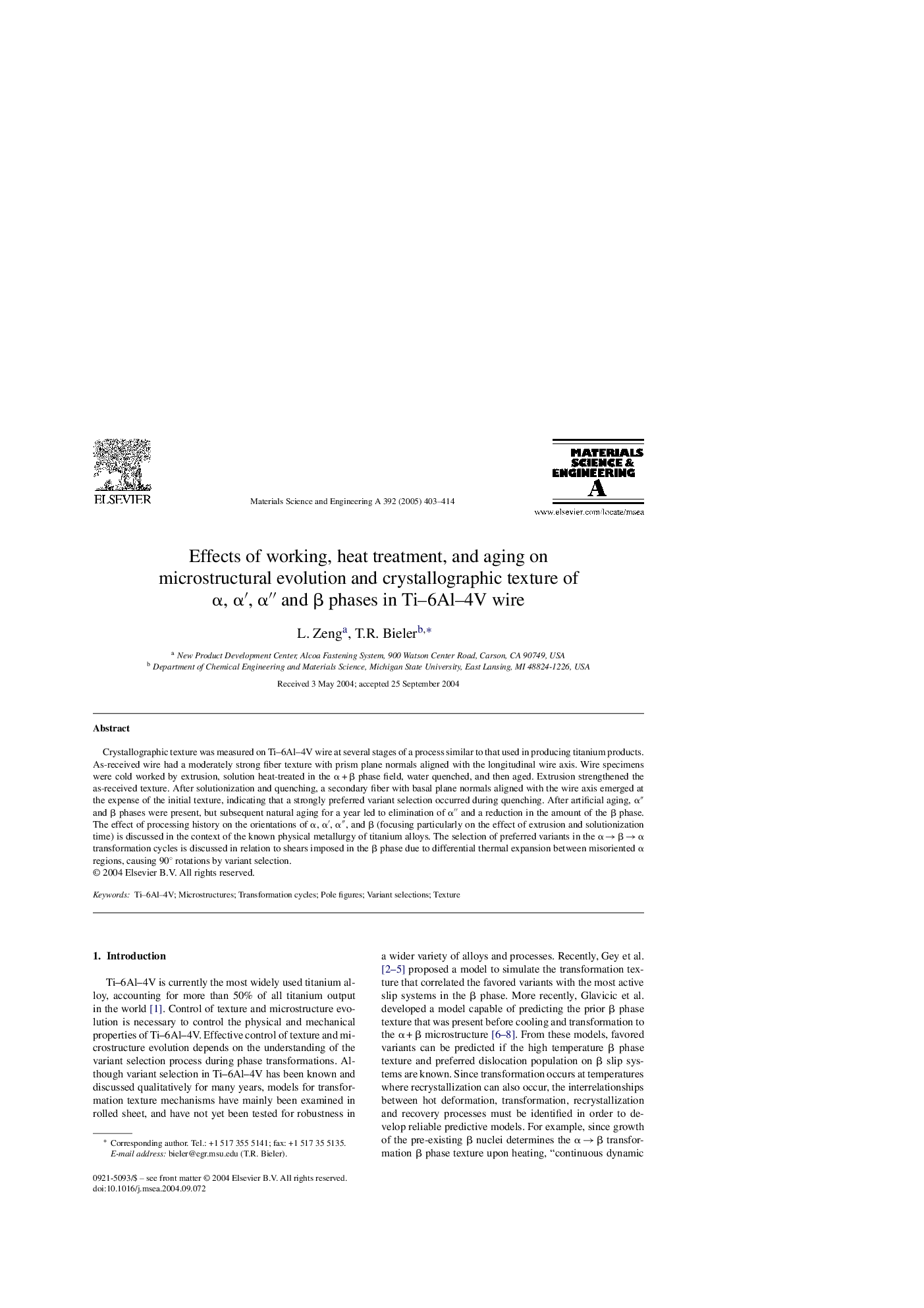| Article ID | Journal | Published Year | Pages | File Type |
|---|---|---|---|---|
| 9796585 | Materials Science and Engineering: A | 2005 | 12 Pages |
Abstract
Crystallographic texture was measured on Ti-6Al-4V wire at several stages of a process similar to that used in producing titanium products. As-received wire had a moderately strong fiber texture with prism plane normals aligned with the longitudinal wire axis. Wire specimens were cold worked by extrusion, solution heat-treated in the α + β phase field, water quenched, and then aged. Extrusion strengthened the as-received texture. After solutionization and quenching, a secondary fiber with basal plane normals aligned with the wire axis emerged at the expense of the initial texture, indicating that a strongly preferred variant selection occurred during quenching. After artificial aging, αⳠand β phases were present, but subsequent natural aging for a year led to elimination of αⳠand a reduction in the amount of the β phase. The effect of processing history on the orientations of α, αâ², αâ³, and β (focusing particularly on the effect of extrusion and solutionization time) is discussed in the context of the known physical metallurgy of titanium alloys. The selection of preferred variants in the α â β â α transformation cycles is discussed in relation to shears imposed in the β phase due to differential thermal expansion between misoriented α regions, causing 90° rotations by variant selection.
Related Topics
Physical Sciences and Engineering
Materials Science
Materials Science (General)
Authors
L. Zeng, T.R. Bieler,
